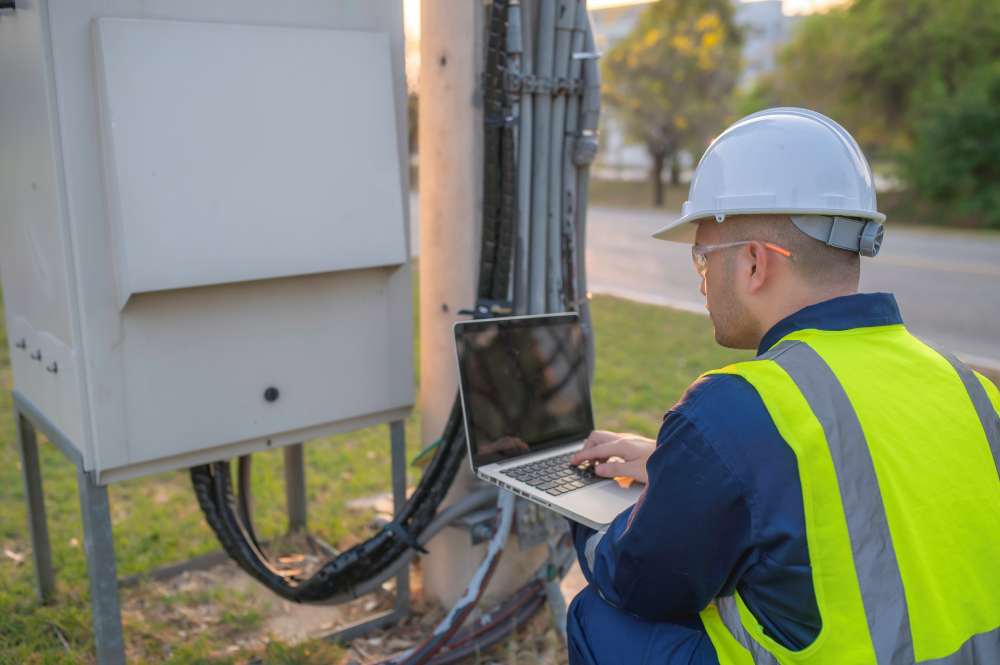A Comprehensive Guide for WISPs: Determining When and Where to Add Fiber to Fixed Wireless Offerings
- by ISPadmin
- 2024 / 11 / 15
- Regulatory


Adding fiber to your fixed wireless services can enhance network reliability, increase speeds, and attract new customers, particularly in underserved areas. However, fiber deployment is capital-intensive and requires strategic planning. This guide helps WISPs determine when and where adding fiber is viable, balancing market demand, financial feasibility, and technical considerations.
1. Evaluate Market Conditions
Understand Customer Demand
- Customer Surveys:
- Ask existing customers about dissatisfaction with current speeds or reliability.
- Gauge interest in fiber and willingness to pay a premium for it.
- Future-Proofing Needs:
- Assess trends in bandwidth consumption (e.g., remote work, streaming, and IoT usage).
Assess Competitor Offerings
- Market Research:
- Identify competitors offering fiber in your service area.
- Analyze their pricing, speed tiers, and service reviews.
- Gap Analysis:
- Look for underserved regions or areas where wireless performance struggles due to capacity or line-of-sight challenges.
Identify Strategic Locations
- Underserved Communities:
- Use FCC maps and other broadband availability tools to find regions with limited high-speed options.
- Growth Areas:
- Target regions with economic or population growth, such as new housing developments or industrial zones.
- Anchor Institutions:
- Focus on areas with schools, hospitals, or government facilities needing robust internet connections.
2. Conduct Financial Feasibility Analysis
Estimate Costs
- Deployment Costs:
- Calculate costs per mile of fiber, factoring in variables like terrain (urban, rural, rocky, or wooded areas).
- Include equipment costs (fiber, cabinets, optical equipment) and installation labor.
- Overhead Costs:
- Account for permitting, legal fees, and insurance.
Analyze Potential Revenue
- Subscription Uptake:
- Estimate adoption rates based on market surveys and competitive pricing.
- ARPU (Average Revenue Per User):
- Compare potential ARPU for fiber vs. existing wireless customers.
- Upselling Opportunities:
- Identify possibilities to bundle higher-tier plans or business services.
Funding and Subsidies
- Public Grants:
- Explore government programs like BEAD, CAF, and USDA ReConnect for funding opportunities.
- Private Partnerships:
- Consider partnerships with municipalities or local businesses for co-investment.
ROI Calculation
- Breakeven Analysis:
- Calculate how many years it will take to recover costs.
- Scenario Planning:
- Run worst-case and best-case scenarios based on adoption rates and costs.
3. Technical Feasibility Studies
Evaluate Terrain and Geography
- Topographical Challenges:
- Analyze whether terrain features (rivers, hills, or urban density) make fiber deployment feasible or prohibitively expensive.
- Rights-of-Way:
- Research easements and utility pole availability for aerial deployment.
- Determine trenching requirements for buried fiber.
Assess Existing Infrastructure
- Utilize Existing Assets:
- Identify opportunities to use existing conduit, poles, or wireless towers.
- Leverage Hybrid Solutions:
- Explore options for integrating fiber backhaul with wireless distribution in challenging areas.
Plan for Scalability
- Future-Proofing:
- Design the network for easy expansion to additional customers or higher speeds.
- Capacity Requirements:
- Ensure the network can support both existing customers and projected growth.
4. Strategic Planning for Deployment
Define Deployment Goals
- Phased Approach:
- Prioritize areas with the highest demand or revenue potential.
- Hybrid Strategy:
- Use fiber backhaul to improve wireless performance in less viable fiber areas.
Create a Business Case
- Stakeholder Buy-In:
- Present the plan to investors, board members, or local governments to secure support.
- Customer Communication:
- Educate customers about the benefits of fiber and the timeline for availability.
5. Deployment Checklist
Pre-Deployment
- Conduct community outreach to secure local buy-in.
- Obtain necessary permits and easements.
- Select reliable vendors for equipment and construction.
Network Design
- Map fiber routes and determine splice points.
- Plan connections to existing infrastructure, such as wireless towers or central offices.
- Allocate redundancy for high availability.
Construction
- Deploy mainline fiber, followed by distribution lines.
- Test each phase for compliance with performance standards.
- Manage disruptions during construction and communicate with affected residents.
Customer Rollout
- Launch targeted marketing campaigns in new fiber-enabled areas.
- Offer introductory pricing to encourage adoption.
- Provide professional installations and setup services.
6. Monitoring and Optimization
Track Network Performance
- Monitor fiber performance and address issues proactively.
- Measure customer satisfaction through surveys and feedback.
Evaluate Financial Performance
- Compare actual adoption rates and revenues to projections.
- Adjust pricing or expansion strategies as needed.
Plan for Expansion
- Use data from initial deployments to refine future fiber rollouts.
- Leverage lessons learned to optimize costs and timelines.
Conclusion
Determining the viability of adding fiber to a WISP’s offerings involves a blend of market analysis, financial forecasting, and technical planning. By carefully evaluating demand, costs, and geographic considerations, WISPs can make informed decisions that maximize their investments while meeting customer needs. A well-executed fiber rollout can position your business as a leader in delivering high-speed, reliable internet to underserved areas.
Contact us here to learn more about how ISP Revolution can help you deploy with confidence – the first time
RECENT BLOG
MORE INFO
ISP Resolution © 2024 All Rights Reserved
